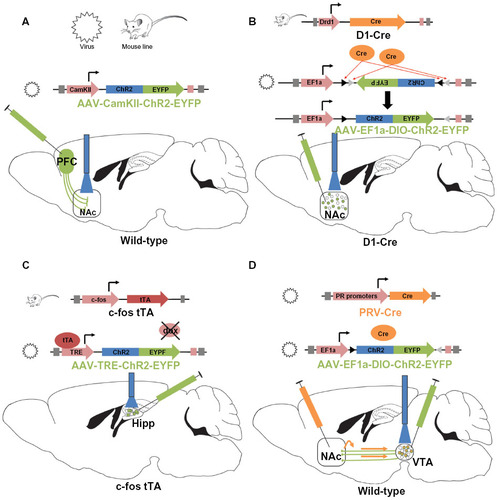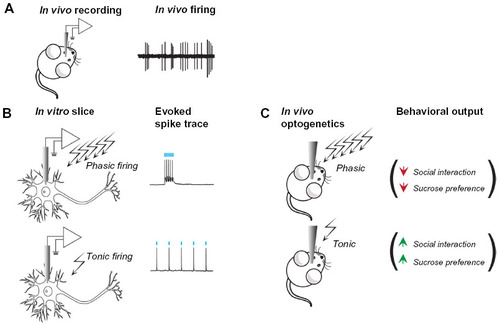Figures & data
Table 1 Transgenic mouse lines used for optogenetic manipulation of behavior
Table 2 Viral constructs utilized in optogenetic manipulation of behavior
Table 3 Behavioral outcomes of in vivo optogenetic manipulation with channel opsins
Table 4 Behavior outcomes of in vivo optogenetic manipulation with signaling opsins


